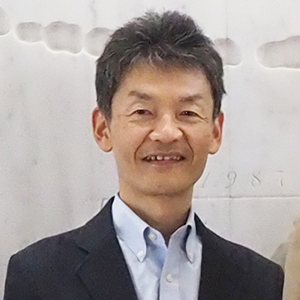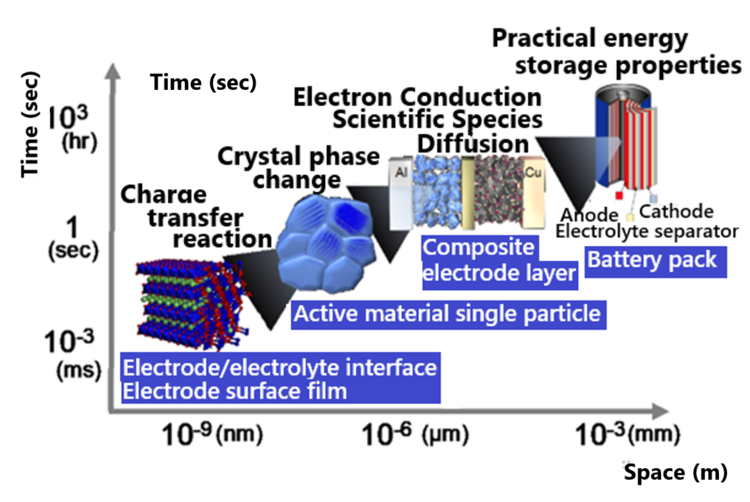
Rechargeable batteries are widely used in automobiles, airplanes, and portable devices, and are one of the devices that support social infrastructure. Secondary batteries have a complex hierarchical structure so that charging and discharging by ion and electron transfer proceeds with high functionality and efficiency. In other words, it is essential to understand "the behavior of conduction/diffusion paths of chemical species" in a multi-scale hierarchical structure in terms of both time and space in order to improve the functionality and longevity of rechargeable batteries.
In this project, with lithium-ion batteries as the main target, we will combine (1) multidimensional mapping of chemical species by various microscopy methods using synchrotron radiation, (2) state observation of light elements using neutrons, and (3) analysis of measurement big data using information science and applied mathematics to visualize conduction and diffusion paths in rechargeable batteries. and feed back to materials/processes.
KIMURA Masao,KIMIJIMA Ken-ichi, NIWA Yasuhiro, OTOMO Toshiya, KAMIYAMA Takashi, KIDO Daiki,
UY Allam Mayrene, SONG Fangzhou
WATANABE Toshiki, UCHIMOTO Yoshiharu (Kyoto University)
MASUDA Takuya (NIMS)
TAKEICHI Yasuo (Osaka University)
INADA Yasuhiro (Ritsumeikan University)
X-ray microscopy (XAFS-CT, STXM, XAS/XRX/XRD, X-CT), XAFS, XRD, Neutron scattering, Neutron imaging, Neutron quasi-elastic scattering, TRHEPD
 Multi-scale hierarchical structure of rechargeable battery in space and time.
Multi-scale hierarchical structure of rechargeable battery in space and time.